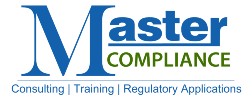In our 1017 Change in Membership blog we discussed events that would be considered a change in membership that trigger the requirements of FINRA Rule 1017. In this blog we will go over some key areas that firms should cover when reviewing to see if they trigger the application requirements under Rule 1017.
Part 1: Changes in Business Lines or Product Offerings
The reviewer is to inspect the Firm’s current membership agreement and verify its approved business lines. The reviewer considers other present or future business lines not contained in its membership agreement. Firms are not to engage in any material business line before membership approval. If you don’t have approval, you are encouraged to document your considerations. You are encouraged to document any advice from professional or regulatory counterparties. The reviewer is to document all considerations and documented verifications (i.e. Legal opinion, email, or letter) from a regulator, competent counsel, or experienced consultant.
- Are all business lines in which the Firm engages contained on the membership agreement?
- Are there any current business lines that are not contained in the membership agreement? If yes, provide details, rationale, and actions.
- Does the Firm anticipate adding any new business lines which may require notification to FINRA?
* Firms may wish to expand the focus to business lines that may have been inactive for an extended period, especially if the Firm’s supervisors have changed hands. While this appears subjective, we suggest at minimum a MAT consultation (“MAT Con”) to verify that such a business line is still in good standing. There is no charge for a MAT Con.
Part 2: Changes in Ownership or Control
Has there or will there be a change in ownership (direct or indirect ownership) with any one person or entity of 25% or more? Rule 1017 is not limited to changes that occur all at once. The Rule is triggered when the change, whether in increments or otherwise, results in one person or entity owning or controlling 25 percent or more of the equity or partnership capital of the member firm for the first time. If yes, explain below and provide details on any efforts to submit Form CMA (which is the FINRA application for change in ownership/control).
Has there or will there be any change in control persons who are considered to be “control persons”? Under this definition, most executive officers and all 25% of owners, general partners, and trustees would be “control persons.”
Part 3: Safe Harbor
To add greater clarity to the process and still preserve flexibility in applying the Rule to individual situations, FINRA staff developed amendments that (1) create a “safe harbor” for specific changes that would be presumed not to be material and therefore not require an application (See IM-1011-1 ); and (2) provide a non-inclusive definition of the term “material change” that would alert member firms to some of the types of business expansions that can be expected to trigger the need to file an application (See Rule 1011(k). Expansions are measured on a rolling 12-month basis, and firms are required to keep records of increases in personnel, offices, and markets to determine if they are within the safe harbor.
“Associated Persons involved in sales” include all Associated Persons, whether or not registered, who are involved in sales activities with public customers, including sales assistants and cold callers, but excludes clerical, back office, and trading personnel who are not involved in sales activities.
The Safe Harbor Provision is not available to any member that has a disciplinary history. For purposes of this Interpretation, “disciplinary history” means a finding of a violation by the member or a principal of the member in the past five years by the Securities and Exchange Commission, a self-regulatory organization, or a foreign financial regulatory authority of one or more of the following provisions (or a comparable foreign provision) or rules or regulations thereunder: violations of the types enumerated in Section 15(b)(4)(E) of the Securities Exchange Act of 1934; Section 15(c) of the Securities Exchange Act of 1934; Section 17(a) of the Securities Act of 1933; SEC Rules 10b-5 and 15g-1 through 15g-9; NASD Rules 2110 (only if the finding of a violation is for unauthorized trading, churning, conversion, material misrepresentations or omissions to a customer, front-running, trading ahead of research reports or excessive markups), 2120, 2310, 2330, 2440, 3010 (failure to supervise only), 3310, and 3330; and MSRB Rules G-19, G-30, and G-37(b) & (c).
Firms are to consider a MAT consultation (“MAT Con”) to consider situations whereby the Firm is nearing its safe harbor limits and wish to expand by a marginal amount. There is no charge for a MAT Con. For other than marginal increases, the Firm will be required to pay the application fee and submit Form CMA.
Part 4: Net Capital Requirement
The Firm must consider any future changes that would require a higher net capital requirement. The reviewer is encouraged to discuss any changes in business with the FINOP to verify the requirements.
MasterCompliance provides expert consulting, outsourcing, and implementation tools in planning and budgeting for your firm’s compliance responsibilities. For assistance identifying if your firm has triggered the application requirements under Rule 1017, please contact us.

